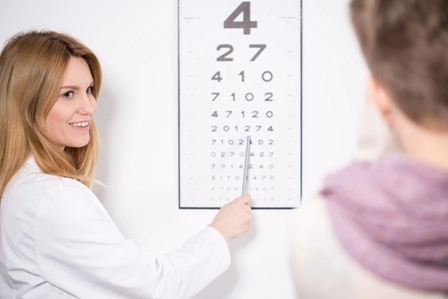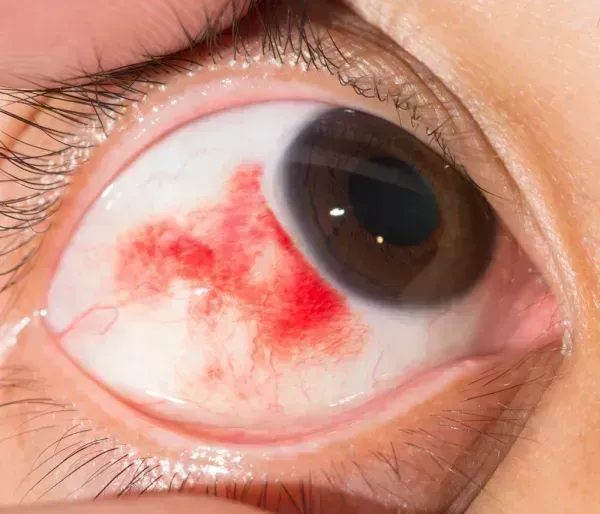Ophthalmology and Optometry Coding Alert
Report the 5 Most-Frequently Billed Eye Care Codes With Ease
These quick tips will ensure that you’re bringing in accurate income for these common services. Eye care practices are always looking for ways to optimize their income, and one easy way to do that is to ensure that you’re reporting your most frequently-billed services accurately. After all, if you’re billing a particular code the wrong way, and that code happens to represent 12 percent of your billings, then it’s likely that 12 percent of your income is arriving at the wrong amount. We’ve compiled a list of the top-five most frequently-billed codes by eye care practices (not including codes that merely describe PQRS measures), based on data shared with Ophthalmology and Optometry Coding Alert by Frank Cohen, MPA, MBB, of healthcare consulting firm DoctorsManagement. We then put together a lightning round of tips that can help you ensure that you’re reporting each code in the top five properly. Read on to ensure that you can bring more cash into your practice with these coding and documentation tips. #1 Most Frequently Billed Ophthalmology Code: 92014 This eye exam care code represents 12.29 percent of ophthalmologists’ claims, making it the number one most frequently-reported code in this specialty. Tip: You are able to report 92014 instead of 92012 if the doctor performs a comprehensive service for an established patient instead of an intermediate service. This means the doctor must evaluate the “complete visual system,” CPT® indicates. The 92014 service includes gross visual fields and basic sensorimotor examination, whereas 92012 may not include those elements. “Typically, a comprehensive exam will generally include dilation of the pupils, biomicroscopy and tonometry,” says Maggie M. Mac, CPC, CEMC, CHC, CMM, ICCE, AHIMA-approved ICD-10 CM/PCS trainer and president of Maggie Mac-Medical Practice Consulting in Clearwater, Fla. “Keep in mind that even an intermediate exam may include these tests as well. While it is still a bit of a gray area to determine the difference between intermediate and comprehensive levels of the ophthalmic codes, some states will have specific language in their administrative code to define a comprehensive examination.” #2 Most Frequently Billed Ophthalmology Code: 92012 The intermediate ophthalmological services code represents 7.92 percent of ophthalmologists’ claims. Tip: You should never report 92012 with 99173 (Screening test of visual acuity, quantitative, bilateral), 99174 (Instrument-based ocular screening [eg, photoscreening, automated-refraction], bilateral; with remote analysis and report), or 99177 (Instrument-based ocular screening [eg, photoscreening, automated-refraction], bilateral; with on-site analysis), CPT® states. That’s because these services are inherently part of 92012, and it would therefore be considered “unbundling” to try and report them together. #3 Most Frequently Billed Ophthalmology Code: 92134 Ophthalmologists reported this scanning computerized ophthalmic diagnostic imaging code on 7.70 percent of their claims. Tip: This test is inherently bilateral, so the reimbursement you collect for the code accounts for what is involved in scanning both eyes. Therefore, when your eye care physician performs the scan bilaterally, you should only report the code once. Do not report 92134 either on two lines — one line with modifier RT (Right side) appended and the other line with LT (Left side) appended — or on one line with modifier 50 (Bilateral procedure) appended. In addition, 92134 has a bilateral modifier indicator of “2” in Medicare’s Physician Fee Schedule. This means that the usual bilateral payment adjustment does not apply. Medicare (and payers who follow Medicare rules) will only reimburse the allowable amount for a single code or one unit of service. #4 Most Frequently Billed Ophthalmology Code: 67028 This eye drug injection code was reported on 4.26 percent of ophthalmologists’ claims. Tip: Don’t forget to also bill the HCPCS codes for the drugs you’ve injected along with 67028. For example, the ophthalmologist injects 20 mg of Kenalog. Report J3301 (Injection, triamcinolone acetonide, not otherwise specified, 10 mg) with “2” in the “units” column of the claim form. This way you’ve collected for both the injection service (67028) and the drug you injected (J3301 x 2). #5 Most Frequently Billed Ophthalmology Code: J2778 The ranibizumab injection supply code was reported on 4.05 percent of ophthalmologists’ claims. Tip: When you report this supply code for Lucentis injections, you’ll determine how many units of the code to report based on the dosage administered, since the J2778 code descriptor describes 0.1 mg. For the standard Lucentis dose, 0.5 mg, report five units of J2778. Don’t forget to code the associated injection and medically indicated diagnosis. For example, if you inject 0.5 mg of Lucentis into the patient’s left eye to treat exudative age-related macular degeneration, you’d report 67028-LT, J2778 x 5, and H35.3220 (Exudative age-related macular degeneration, left eye, stage unspecified). For more information: Full reports of the most frequently-billed codes by ophthalmologists are available at http://shop.doctors-management.com/Procedure-Code-and-Modifier-Utilization-Workbook_p_111.html.
Related Articles
Ophthalmology and Optometry Coding Alert
- Revenue Booster:
Report the 5 Most-Frequently Billed Eye Care Codes With Ease
These quick tips will ensure that you’re bringing in accurate income for these common services. [...] - Check Out Optometrists' 5 Most Frequently-Billed Codes
Three of the five most-commonly reported codes are different from ophthalmologists’. If your optometry practice [...] - ICD-10:
Test Whether You Can Fill in the ICD-10 Blanks on This Eye Care Note
This quick quiz will help you determine whether you can assign the right diagnosis codes. [...] - Patient Privacy:
This Clinic Got Hacked, Had to Pay $400K HIPAA Breach Penalty
Ensure that you don’t face a similar fate — keep your practice protected. Imagine this: [...] - You Be the Coder:
This Payer Has New Exam Tallying Rules
Question: Can you explain the differences between the expanded problem-focused exam and the detailed exam for [...] - Reader Question:
Don't Use 99211 As A Catch-All
Question: Our ophthalmologist evaluated an established patient for dry eyes and offered her a sample of [...] - Reader Question:
Use Care When Swapping Between 1995, 1997 Guidelines
Question: I know I can choose either the 1995 or the 1997 documentation guidelines for evaluation [...] - Reader Question:
Keep 60-Day Overpayment Threshold at Top of Mind
Question: Our MAC says we must return any overpayments to federal health programs within 60 days. [...]




